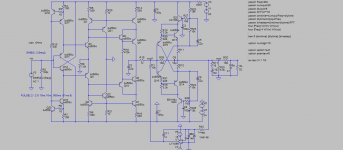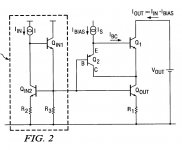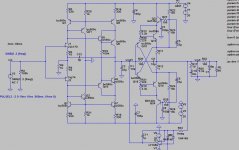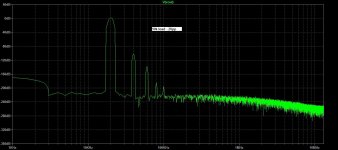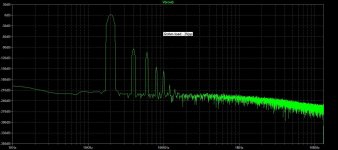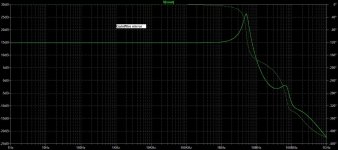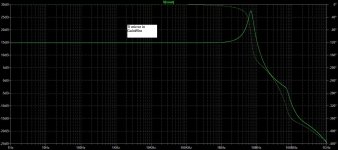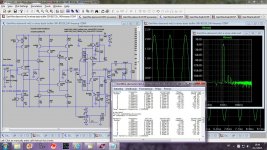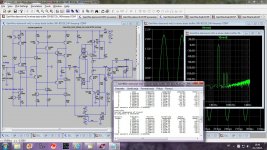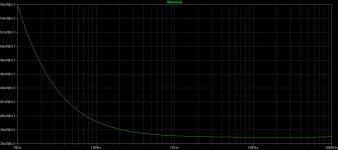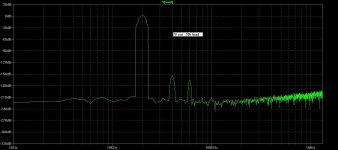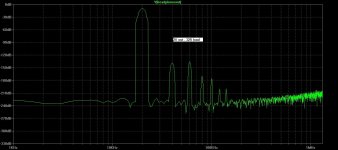Dadod,
Here is a page I copied from the texas european patent some years back that I kept for reference. There is a small difference though and I wonder how much difference it makes to performance. In the patent I remember they claimed a 10x improvement in impedance over a cascoded current mirror.
Here is a page I copied from the texas european patent some years back that I kept for reference. There is a small difference though and I wonder how much difference it makes to performance. In the patent I remember they claimed a 10x improvement in impedance over a cascoded current mirror.
Attachments
Dadod,
Here is a page I copied from the texas european patent some years back that I kept for reference. There is a small difference though and I wonder how much difference it makes to performance. In the patent I remember they claimed a 10x improvement in impedance over a cascoded current mirror.
Thanks Manso, it is not the same, for me it looks quite different, I should try this one too.
This version I called mk3, it's simpler and with a bit higher distortion then mk2, and uses JFETs in the input, possible not so easy obtainable. It's run on +-20V and DCservo opamp could use the same power supply with no need to lower the voltage.
Attachments
Thanks Manso, it is not the same, for me it looks quite different, I should try this one too.
The only difference is that they connect the baxandall cascode`s input to the mirrors base and not the mirrors input.
Interesting, looking forward to your findings.
The only difference is that they connect the baxandall cascode`s input to the mirrors base and not the mirrors input.
Interesting, looking forward to your findings.
I simulated it and I've got almost the same distortion as with the mirror I am using. Does that difference is enough to prevent patent infringement?
I simulated it and I've got almost the same distortion as with the mirror I am using. Does that difference is enough to prevent patent infringement?

There must be someting to it. I wonder about mirror peaking, they dont suggest compensation of this mirror. The best would be to sim it in isolation to be sure.
For Diy there isnt any problem in using it though. Texas instruments btw must be very suspicious fellas, many of their patents have both european and US registries for the same patent.

There must be someting to it. I wonder about mirror peaking, they dont suggest compensation of this mirror. The best would be to sim it in isolation to be sure.
For Diy there isnt any problem in using it though. Texas instruments btw must be very suspicious fellas, many of their patents have both european and US registries for the same patent.
I simulatid the gain stage with TI mirror and my mirror and there is peaking in both of them without any compensation. TI looks a bit better??
Attachments
For Diy there isnt any problem in using it though. Texas instruments btw must be very suspicious fellas, many of their patents have both european and US registries for the same patent.
I was just thinking, maybe in the future, if there is interest to offer PCB???
yes
I would buy one!
if you were writing about your Gain Wire mk 2, not the patents😉
I will design the PCB first and we will see.
GainWire mk2 ODNF
This preamp with ODNF gives sensational low distortion, I've never seen any simulation with that low THD20k and it is at 2V output, enough to push many power amps in to clipping.
Additional benefit of the ODNF is that it acts as DC servo too.
Damir
This preamp with ODNF gives sensational low distortion, I've never seen any simulation with that low THD20k and it is at 2V output, enough to push many power amps in to clipping.
Additional benefit of the ODNF is that it acts as DC servo too.
Damir
Attachments
Gives new meaning to what Self calls blameless. True wire with gain which is what amplification should be.
Have a look at the noise figure, this should have improved as well.
Have a look at the noise figure, this should have improved as well.
Indeed.
An amplifier should offer a scaled version of the input signal, with nothing added and nothing taken away in the required passband.
Obviously, we can never achieve this perfection, but we should try to approach High Fidelity.
If one does not like the "neutral" reproduction of the source material, from the "near perfect" amplifier, then do add in some EQ after the Source, or select a different Source.
An amplifier should offer a scaled version of the input signal, with nothing added and nothing taken away in the required passband.
Obviously, we can never achieve this perfection, but we should try to approach High Fidelity.
If one does not like the "neutral" reproduction of the source material, from the "near perfect" amplifier, then do add in some EQ after the Source, or select a different Source.
Gives new meaning to what Self calls blameless. True wire with gain which is what amplification should be.
Have a look at the noise figure, this should have improved as well.
Noise!
Attachments
It is now quite insensitive to the load! Connected to the power amp of 10k or higher input inpedance or 32 ohm headphones does not matter.
Attachments
- Status
- Not open for further replies.
- Home
- Amplifiers
- Solid State
- No NFB line amp (GainWire mk2)
